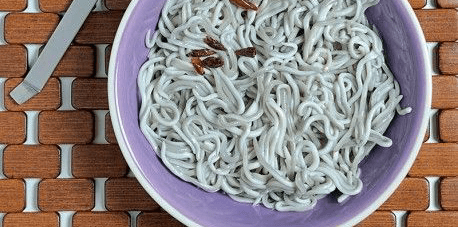Although it may seem a relatively young product, Gulas are nearly 30 years old in the world of gastronomy. To explain the history of this fish surimi it is necessary to refer to the elvers, their nature, their consumption tradition, and their scarcity.
In this article, we will try to make you a gulas expert, so that you will understand the difference between gulas and elvers, and also get to know their nature.
Gulas: its origin
In order to explain the meaning of gulas, it is necessary to refer to the elvers. Elvers are the offspring of eels and they are a jewel in gastronomy. Due to its difficulty in being fished, it its market cost is raised.
Elvers live in freshwater and travel from rivers to the Caribbean Sea, where they lay their eggs. Each specimen lays between 500,000 and 4,000,000 eggs. Initially, they have a millimetre of length, they do a 11-month trip till they arrive to the European rivers, where they finally settle down.
It was not till last century that this process was discovered. It was a real enigma, since we knew that the eels lived in the rivers, but we were surprised that we could never find any eggs there.
When they reach the mouth of the river, they measure 5 to 7 cm and have a thickness of about 2 mm. And it is there, right before beginning its ascent by the riverbed, where they are fished. The increase in demand and the possible reduction of specimens led to the initiation of investigations to create a substitute capable of meeting demand.
This is how surimi appeared, as a result of some private entities and C.S.I.C research. It was released in 1991.
So, Gulas are actually a surimi of fish or fish pasta that is given the shape that mimics the elvers. It comes from Japan and it is made with a millennial gastronomic technique that makes a dough based on the meat of white fish loin. Once this fish meat is minced and washed, it becomes a fat-free protein food.
Gulas or elvers
¿Gulas or elvers? The big question. Many of you would be wondering if they are the same, but with the above explanation we can verify that they are not. Elvers are a kind of seafood that come from eels, while gulas are an imitation of it, made like surimi.
Initially, elvers consumers said that gulas presented a different texture and consistency, but this problem has been solved and the product has now been significantly improved.
In terms of taste, consumers of both products differ regarding similarity, but actually, its flavour depends greatly on its cooking technique. They are usually fried with oil, garlic and chili pepper or cayenne.
How to cook Gulas?
As we have mentioned previously, the most used preparation technique to cook gulas is to fry them with oil, garlic and chili pepper or cayenne. But fish surimi is also frequently used as a complement to other dishes. Its consumption has been widespread since its beginnings. Among its most relevant recipes, we highlight the scrambled gulas and prawns, which with top quality gulas, peeled and fried prawns, and garlic shoots of about 4 cm, will be special delight for yourself. In Gastronomic Spain you will find this product ready to serve, so that you can take your guests breath away.
Buy gulas online at good price in Gastronomic Spain
This surimi are usually sold raw, fresh, frozen, or already cooked with garlic and olive oil. In our online shop you can find the best gulas in the market. Ans also scrambled gulas and prawns, crab surimi or other appetizers such as olives.
Our catalogue is very extensive, we have more than 800 products at your disposal, all typical Spanish products at your fingertips and with one click. Furthermore, shipping costs are on us!
Do not hesitate and check it out yourself here!







